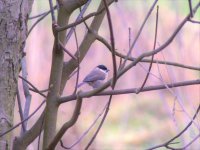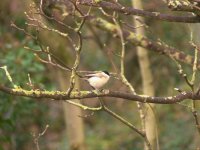Hi Paul
It’s actually the cutting edge of the upper mandible rather than an actual spot as such, although it’s more obvious at the base. Not all Marsh Tit have this, also on photos and in the field, abrasion and wear can be mistaken for this feature. Lighting can also make this an unhelpful feature (as light reflects off black bills) unless the bird is in the hand. The same goes for the presence of a pale wing panel on Willow - light refecting off the edge of the secondaries rather than pale margin to the feathers.
I posted a good link on this thread recently to clear ID criteria which you may find helpful. The cheek remains a better criteria for separation in the field and is actually quite visible at a distance cf to the bill character.
Hi there! I was wondering if anyone could lend some expertise in identifying this bird. I'm thinking marsh or willow tit - but I have heard separating the two can be difficult. Spotted in a boggy old woodland - Askham Bog, York to be specific. Only got the one photo and I didn't catch the call...

www.birdforum.net
Of course calls are good if you can learn them. And very loud - I had a Marsh Tit a few days ago on the bird feeders but I heard the call long before!
I get the general impression both are Marsh (the second looks general greyish brown at the neck sides to me, the ear coverts are over-exposed so may look whiter at the rear than they are, but it’s hard to be sure.









